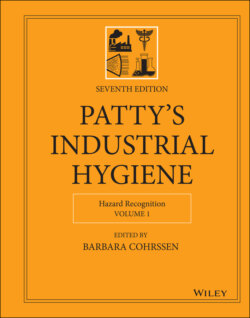Читать книгу Patty's Industrial Hygiene, Hazard Recognition - Группа авторов - Страница 117
4.2 Risk Matrix Communication
ОглавлениеTo cope with this ambiguous middle band, the classic CB delineation of bands, or RLs tends toward four as it divides the yellow light in two and provides a better decision matrix to ensure the commensurate controls are in place. This is the basis of the standardized four‐by‐four risk matrix using inputs of relative severity and probability (Figure 3). It is a popular basis for CB models, but is also used throughout industry, in project management, and in corporate board rooms, providing a simple mechanism to increase visibility of potential impact, eases communication of risks, and assists in all manners of decision making. From the CB model perspective, it is all about scaling prevention to a given situation in a toolkit designed as a complement to the EHS professions, rather than a replacement. The more difficult a toolkit is perceived to be in its conceptual phase, the less likely it is to make it to the development phase. Therefore, limiting the number of factors within a given CB model to four on each axis avoids the “yellow light” objectivity, reduces its complexity, and increases its applicability for nonexperts. With severity and probability input factors tailored to a given workplace hazard, the RL1–RL4 risk matrix outcomes are provided in a graded approach that is paired with commensurate controls to reduce the risk of the given workplace‐related hazard. For the many chemical agent CB models used as an example, these four control strategies are a grouping of three levels of engineering controls based on sound IH principles: general ventilation (RL1), local exhaust ventilation or fume hoods (RL2), containment (RL3), and professional IH expertise for the RL4 category. Commonality of form and function, toward identifying and reducing workplace‐related risks and controlling and reducing injuries and illnesses, has built international demand for simplified approaches to banding risk 24).
Figure 3 A basic control banding 4 × 4 model for delineating risk levels. A risk level (RL) is an outcome of probability and severity inputs, with RL1 as the lowest risk and RL4 the highest.
